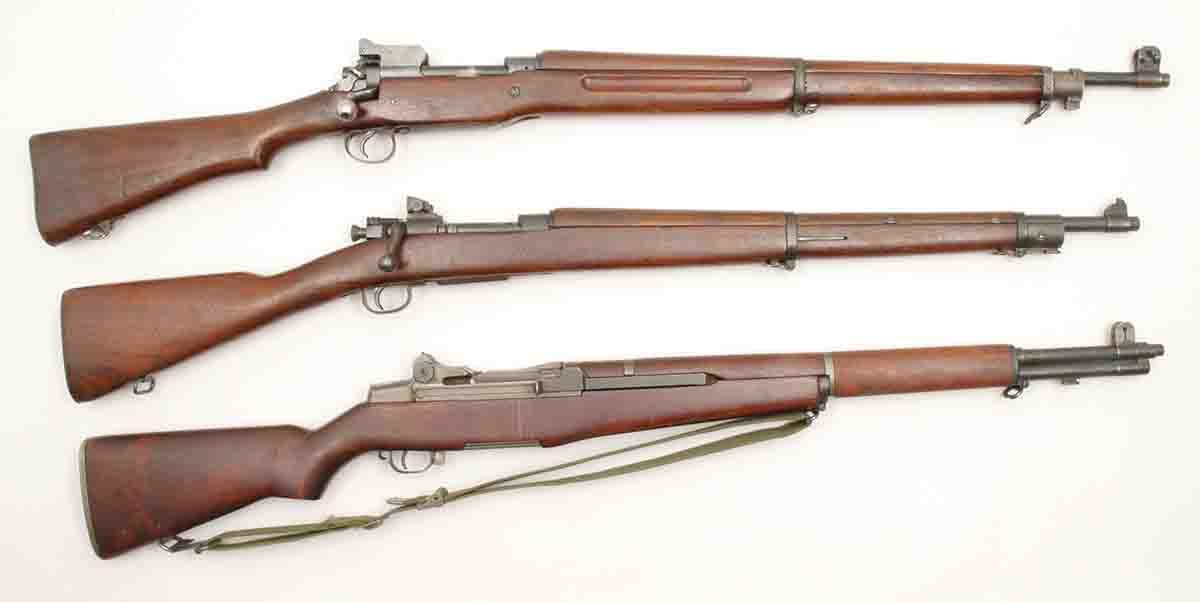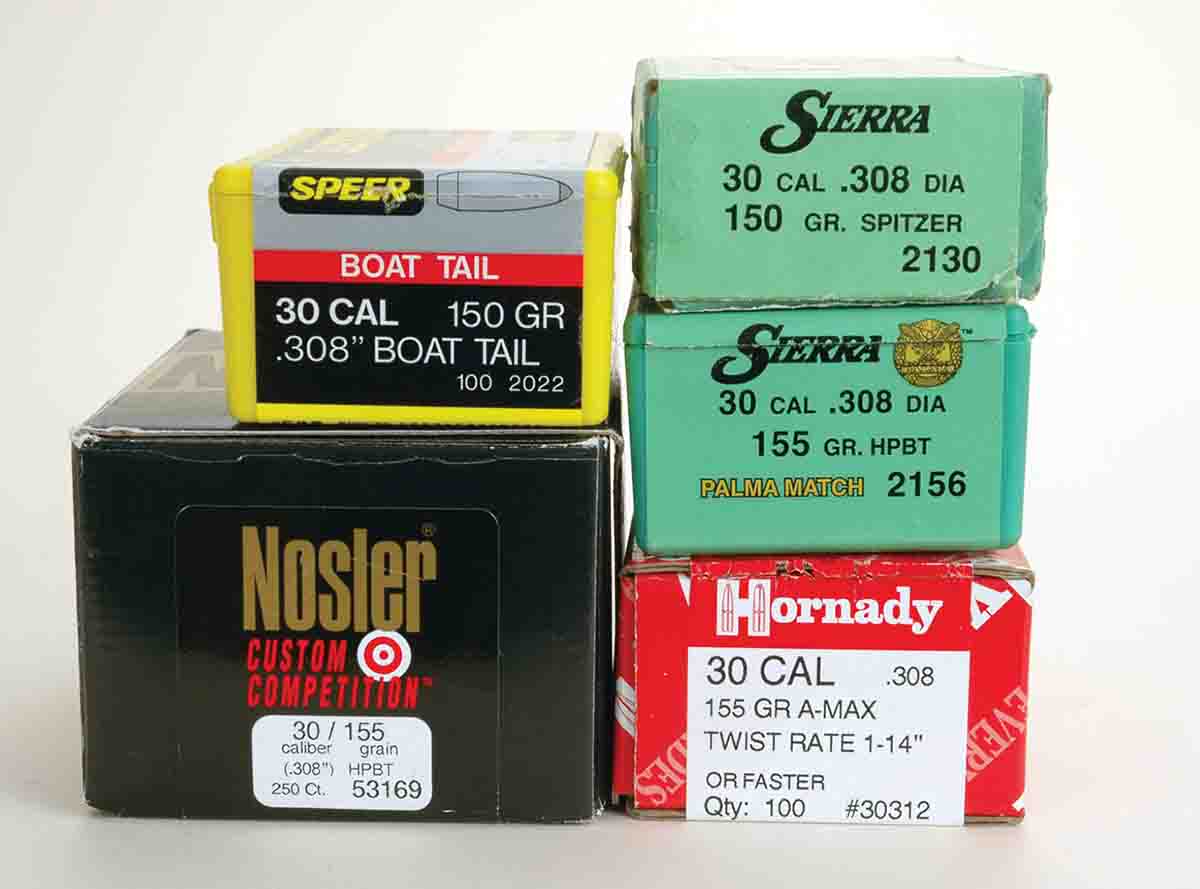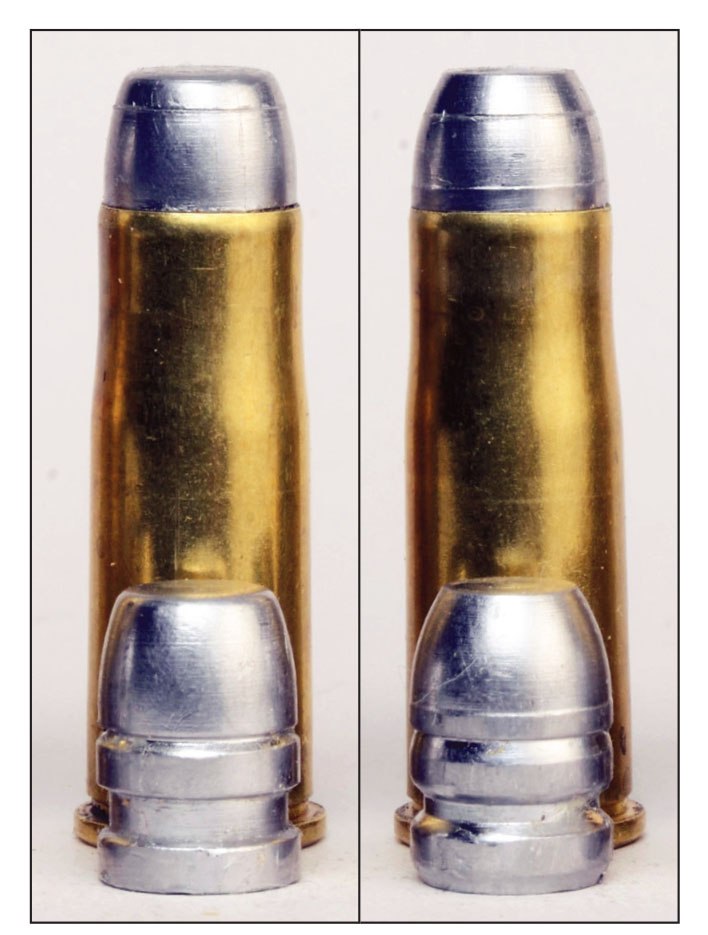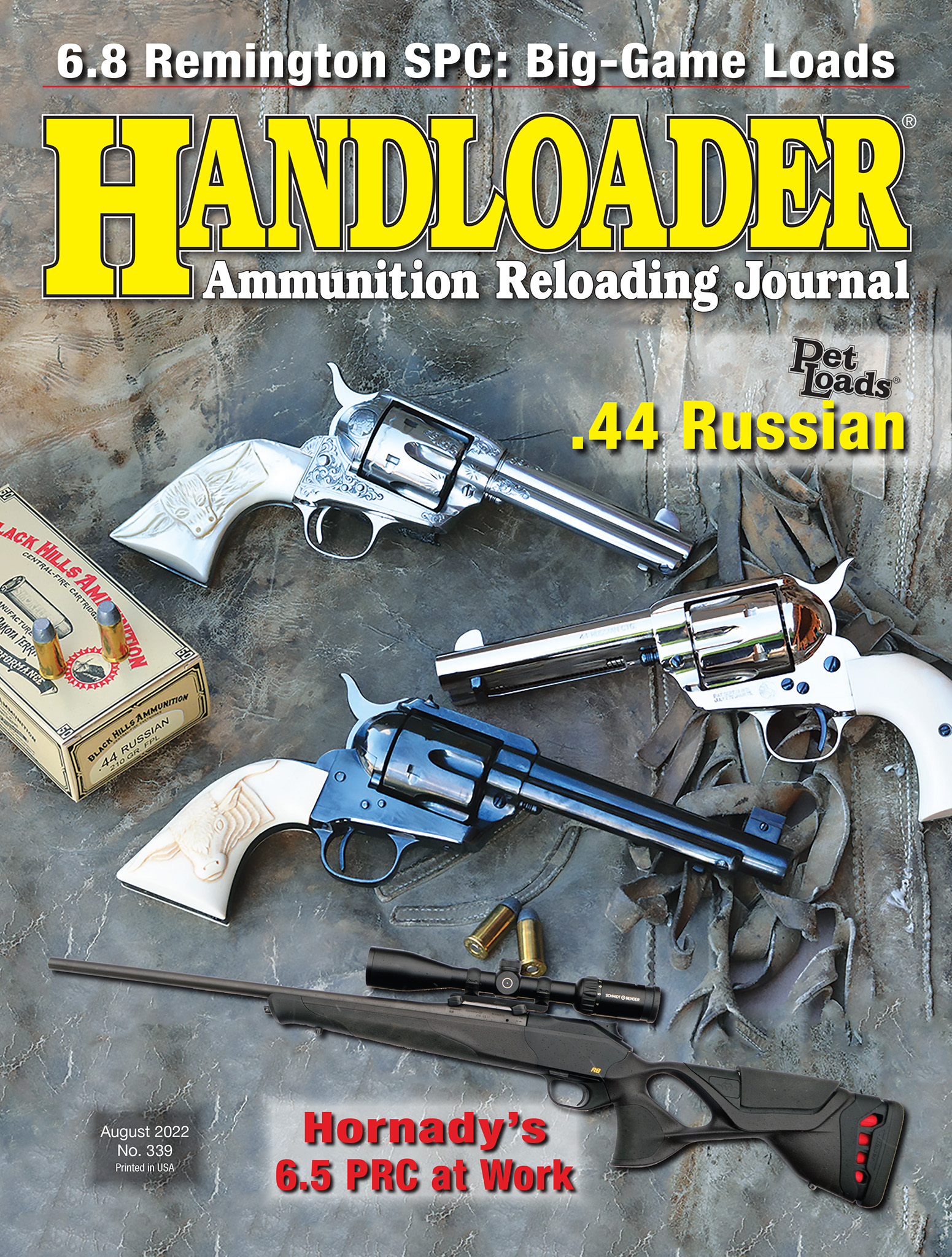Mike’s Shootin’ Shack
Best Loads vs. Standard Loads
column By: Mike Venturino | August, 22

For those with a single rifle or handgun for any particular cartridge, settling on one perfectly adequate load combination can be easy. For example, I’ll use my pre-’64 Winchester Model 70 Featherweight .308. It’s the only .308 Winchester with which I’ve hunted big game. The same week I purchased it in November 1980, a load consisting of 44 grains of IMR-3031 with Sierra 150-grain spitzers in Winchester brass consistently gave 1½ MOA groups. Velocity crowded 2,800 fps. Hunting in Montana, coyotes, pronghorns, mule deer and elk fell to it along with a couple of plains antelope in Africa. There has never been a reason for further experimentation. However, at times, Nosler’s 150-grain Partition bullets replaced the Sierras.

This should be admitted first. Sometimes my standard load is not the best load I have tried and I realize it. There are other factors to consider. Let’s use the .38-40 as an example. In my racks, I have a Winchester Model 1873 rifle made in 1899 and a Colt SAA revolver made in 1904. Also in my racks, there are stronger Model 1892 Winchesters made in the twentieth-century and modern Colt SAA revolvers made in the twenty-first-century. After considerable paper target shooting, a load consisting of a 180-grain RN/FP (RCBS bullet No. 40-180-CM) over 7 grains of Unique could be considered best. In the ’73 and ’92 rifles, velocities nudged 1,200 fps, and from a 1996 vintage Colt SAA with 5½ inch barrel, velocity average was just shy of 900 fps. Such ballistics duplicate original black-powder factory loads.
That said, there are other matters to consider. The steel from which the Winchesters and early twentieth-century Colt SAAs were crafted has aged for more than a century. Factor in the collector’s value and 7 grains of Unique seems too much for a constant diet in elderly firearms. So, I adopted as my standard load, the gentler charge of 5.5 grains of Trail Boss. Rifle velocities then are about 1,000 fps and about 750 fps from handguns. Also, there must be some latitude in standard loads. Although the RCBS 180-grain RN/FP is favored, and they must be cast by me. When too pressed for time to cast, a great substitute is Oregon Trail’s 180 grain RN/FP.
Stepping up to military .30-06s, some other variables must be considered. The primary factor is that five are bolt actions and two are M1 Garands. Four bolt actions are permutations of the basic Model 1903 Springfield along with a Remington Model 1917. All are considered very strong actions. Until buying the Garands, I was perfectly satisfied with IMR-4350 or Hodgdon H-4350 for powder. In fact, I first used IMR-4350 in Winchester Models 54 and 70s as far back as 1974 with excellent results. As expected, it was a fine performer in the military bolt actions with all sorts of bullets.

There is one variable in all my handgun handloading that I stoutly resist changing. That is cast bullets for revolvers. I don’t care if the revolver is a Colt SAA .32-20 or a Ruger .44 Magnum, they all get cast bullets. Actually, most of my semiauto handguns also get cast bullets. In fact, the only jacketed handgun bullets I buy are .355-inch 115-grain FMJs for 9mm and 230-grain FMJs for .45 Auto. Those are mostly reserved for my World War II submachine guns. Naturally, I get asked, “Don’t you handload JHPs or JSPs for self-defense loads?” Nope. Although I have several guns for self-defense, they are loaded with good-quality factory ammunition.
About the only cartridge for which I have multiple firearms that has defeated my standard load concept is the one I’ve handloaded longest. That is the .38 Special, which I started with in 1966. As long as my only .38 Special revolver was a Smith & Wesson K38, things were simple. However, now I have .38 Specials revolvers ranging from tiny S&W five-shooters to medium frame S&W Model 10s to a 40 ounce-plus N-frame S&W Model 23 and a likewise large and strong Colt SAA. There has just been no way I can dream up a single handload that suits them all.
I need to say that I still like to experiment, but having a quantity of my standard loads assembled and stored in ammo cans means that when the urge arises to shoot many of my firearms, ammunition is already at hand.


